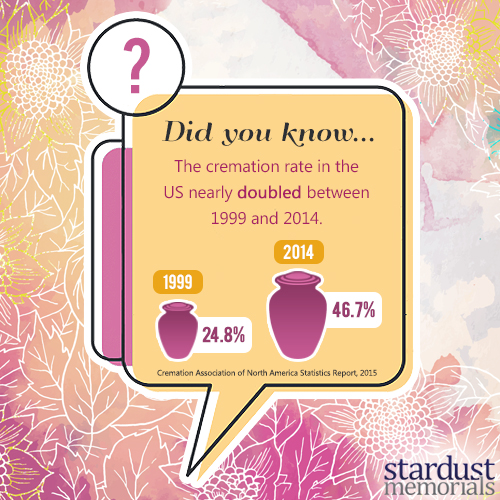When a loved one dies, the last thing on your mind is what to do with their cremation ashes. But once you have time to process the loss and grieve, you'll likely want to consider your options. There are many ways that you can honor a person who has passed away by scattering their cremains or using them in another way. Here are some ideas for what to do with cremation ashes:
Scatter the ashes on land
It is illegal to scatter cremation ashes on land in some countries, including parts of the U.S. because it can be difficult to find a place where you're allowed to do so. As such, this option should only be considered if you live somewhere where scattering ashes is legal and accessible.
There are also environmental concerns related to scattering ashes on land; for example, if someone scatters their loved one's remains near a riverbank or lakefront area with heavy traffic from boats or jet skis (or other vehicles), it could cause the remains of their loved ones' bodies (and any toxic chemicals contained therein) to wash up onto shorelines--which could lead others who come into contact with those chemicals into becoming ill themselves!
Scatter the ashes at sea.
The next option is to scatter your loved one's ashes at sea. This can be done either on a boat or from shore, but you must get permission from the authorities before doing so. If you plan to do this in a boat, make sure that your loved one's remains are sealed in an airtight container so they don't become scattered by wind or water currents and end up in someone else's hands!
Keep the urn in your home.
If you choose to keep the urn in your home, there are a few options:
For a few months. This is an option if you want to give yourself time to heal before deciding what to do with the ashes. You can also do it if you plan on scattering them soon, but want to save some of them for later on.
For years or decades. If this person was important enough to have their ashes kept by family members, then they deserve respect even after they die! It would be disrespectful not only toward them but also toward their loved ones if we just threw away their remains without making sure everyone has had a chance at seeing them and saying goodbye properly first.
Forever! Some people want their loved ones' remains close by so that they'll never forget about them again; others prefer having something tangible like jewelry made from cremated remains instead (which brings us back around full circle). Whatever works best for both parties involved should definitely be considered here--it's all about respecting both sides equally when making decisions regarding these types of situations."
Bury or inter the ashes
Ashes can be buried in a casket, or they can be placed in an urn and interred at a cemetery. If you choose to bury your loved one's ashes, there are many options when it comes to choosing the location. Burial can take place in a traditional grave site, although this option is often more expensive than other types of burial such as cremation ashes entombment or scattering. For families who already have family plots set up for their loved ones' remains (either because they were born into them or because someone else purchased them), that may be an ideal choice for you.
If you do not have an existing plot and want to create one specifically for your deceased loved ones' ashes, there are still plenty of options available: some cemeteries allow people who don't own land yet still want their own dedicated space within its borders; others offer limited opportunities through partnerships with nearby churches or other organizations whose memberships include those who wish these sorts of arrangements but don't have any personal connections with those groups yet feel comfortable working with them based on reputation alone (or maybe even just word-of-mouth recommendations).
Have the ashes made into jewelry.
Cremation jewelry is a great way to keep the ashes of your loved one close to you. It can be made of a variety of materials, including gold and silver, or even diamonds. There are many different types of cremation jewelry available that can be customized by adding birthstones or engraving an inscription on the piece. The cost depends on what kind of material is used in making it, but it's usually not much more than buying an average piece at an outlet store (around $50).
Create a living memorial (tree, plant, flower garden).
- If you're looking for a way to honor your loved one, consider planting a tree or creating a living memorial.
- Planting trees and flowers will help keep their memory alive in the world around you.
- You can also create a living memorial by putting up plaques with their name and date of birth on them.
Conclusion
There are many options available for what to do with cremation ashes so it is up to you to decide. The most common choices are scattering the ashes on land or at sea, keeping them in an urn at home, burying or interring them in a cemetery or memorial garden, having them made into jewelry and creating living memorials such as trees, plants or flower gardens. Whatever decision you make will be personal and meaningful but we hope this article has given some insight into how others have handled similar situations in their lives.

